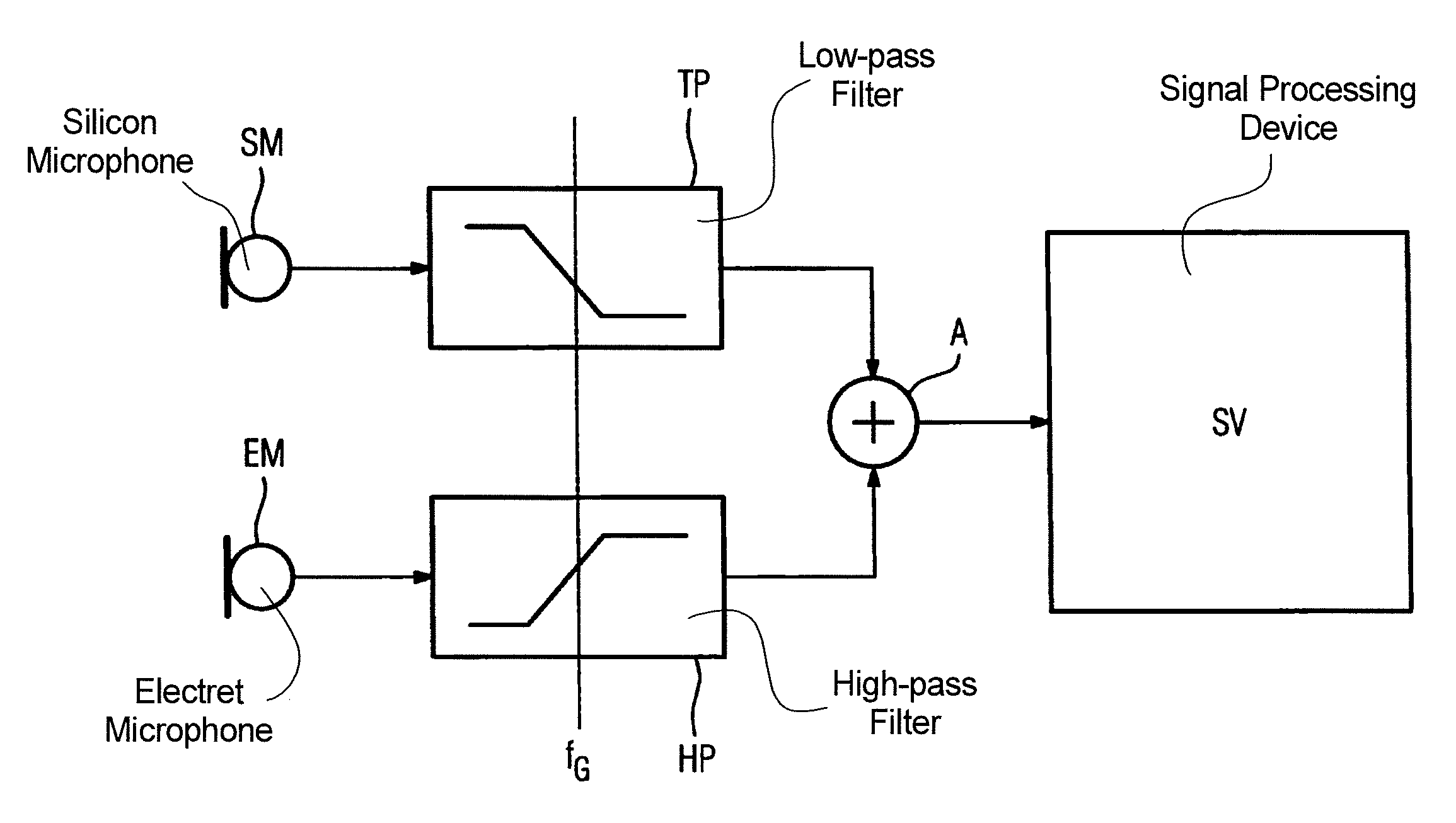Hearing aid employing electret and silicon microphones
a microphone and microphone technology, applied in the field of hearing aids, can solve the problems of limiting the dynamic range of the microphone in the hearing device, notably boosting the noise of the microphone at low frequencies, and reducing the signal-to-noise ratio at low frequencies, so as to achieve the effect of reducing nois
- Summary
- Abstract
- Description
- Claims
- Application Information
AI Technical Summary
Benefits of technology
Problems solved by technology
Method used
Image
Examples
Embodiment Construction
[0017]The exemplary embodiments described in the following represent preferred embodiments of the present invention.
[0018]The basic signal input components of an inventive hearing device are drawn in the FIGURE. The hearing device has a silicon microphone SM and an electret microphone EM. The output signal of the silicon microphone SM is supplied to a low-pass filter TP. The output signal of the electret microphone EM is delivered on its end into a high-pass filter HP. The limit frequency fG of both filters TP and HP is selected approximately equally high, such that in a first approximation a transfer function designed flat for both filters mutually results in the sum. Both output signals of the filters TP and HP are added in an adder A. The sum signal of the adder A is supplied to the further hearing device signal processing SV.
[0019]With this design, the fact is utilized that silicon microphones possess a low internal noise at low frequencies but they perform worse than convention...
PUM
 Login to View More
Login to View More Abstract
Description
Claims
Application Information
 Login to View More
Login to View More - R&D
- Intellectual Property
- Life Sciences
- Materials
- Tech Scout
- Unparalleled Data Quality
- Higher Quality Content
- 60% Fewer Hallucinations
Browse by: Latest US Patents, China's latest patents, Technical Efficacy Thesaurus, Application Domain, Technology Topic, Popular Technical Reports.
© 2025 PatSnap. All rights reserved.Legal|Privacy policy|Modern Slavery Act Transparency Statement|Sitemap|About US| Contact US: help@patsnap.com


